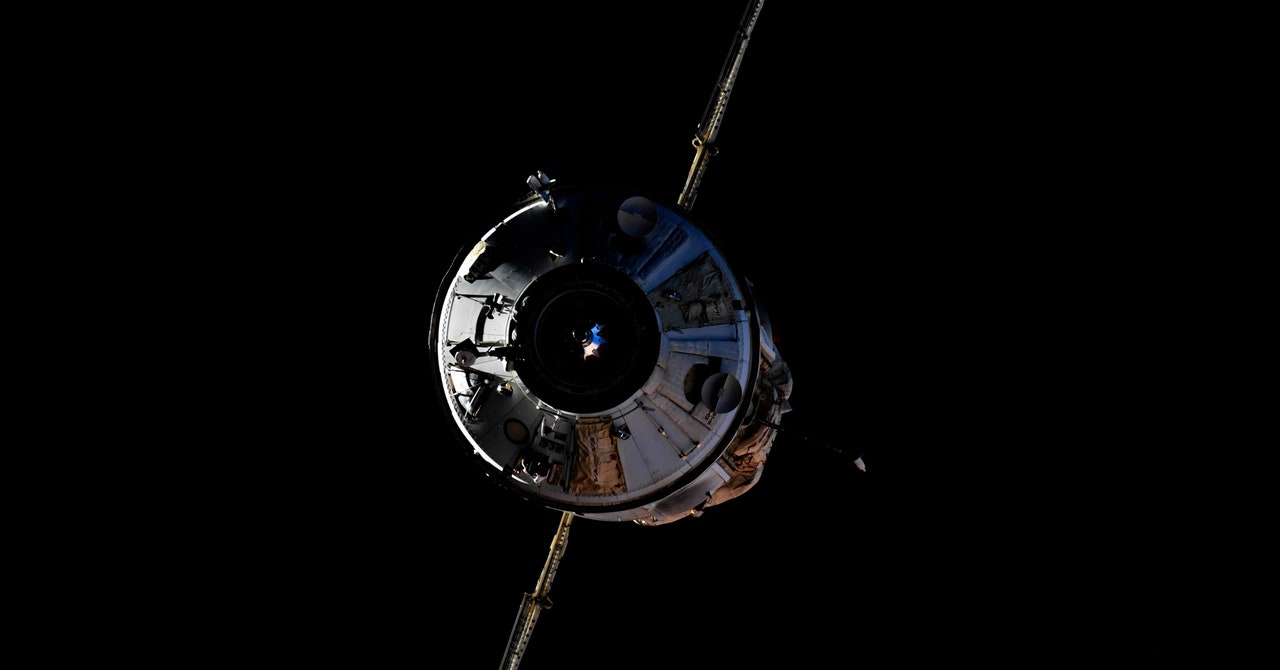
Last Thursday the big new Russian space station module, Nauka, finally docked with the International Space Station after several technical issues en route to the orbiting laboratory. However, the problems did not end there. About three hours after linking to the station, Nauka began firing its propulsion thrusters, throwing the space station off kilter.
This led NASA Mission Control in Houston to initiate “loss of attitude control” procedures on board the station, a contingency astronauts and flight controllers train for. Then, in concert with flight controllers in Moscow, the teams commanded the station to fire its thrusters on the Russian segment of the space station, as well as a Progress supply vehicle attached to the laboratory. These combined actions prevented the station from tumbling too violently until Nauka exhausted its primary fuel supply.
Following this near miss, NASA hastily called a news conference and brought out key figures before the media, including human spaceflight chief Kathy Lueders and the leader of the International Space Station program, Joel Montalbano. Both said NASA and the Russian space corporation, Roscosmos, had the situation well in hand and downplayed the overall risk to the station and the astronauts on board.
However, they deferred many questions on the technical issues to Roscosmos, which has offered mixed messages. A senior official in Roscosmos, former cosmonaut Vladimir Solovyov, said in an official statement, “Due to a short-term software failure, a direct command was mistakenly implemented to turn on the module’s engines for withdrawal, which led to some modification of the orientation of the complex as a whole.”
This makes the problem sound like a software error. But later, the head of Roscosmos, Dmitry Rogozin, acknowledged that someone on the ground could have made a mistake. “Everything was going well, but there was a human factor,” he told a Russian publication, as reported by Reuters. “There was some euphoria (after the successful docking), everybody got relaxed.”
Now that the immediate danger has passed, the most pressing concerns are that this happened at all and what it may mean for ongoing Russian participation in the International Space Station program. For NASA, the primary goal is to maintain a human presence in low Earth orbit, and this means flying the station for the remainder of the 2020s.
Given the likelihood that Nauka’s errant thruster firing involved human error, that would be at least the third major problem in less than three years resulting from shoddy work. In October 2018, the launch of Russian cosmonaut Aleksey Ovchinin and NASA astronaut Nick Hague was aborted after a Soyuz booster failure, and the crew had to make an emergency return to Earth. A subsequent investigation found that the side-mounted booster had been improperly mated to the core stage of the Soyuz rocket.
At around the same time, Russia announced that there was a small hole in a different Soyuz vehicle, already attached to the International Space Station. “We are able to narrow down the cause to a technological mistake of a technician,” Rogozin said of the problem.
These technical errors have occurred as Roscosmos has had difficulty paying its engineers and technicians a living wage. And now the country’s space budget faces further pressure as NASA no longer needs to buy Soyuz seats for its astronauts to ride to the International Space Station—thanks to SpaceX’s Crew Dragon vehicle and, hopefully soon, Boeing’s Starliner.
Despite all of this, NASA has remained publicly supportive of Russia and its space program. And it has to be relieved that, regardless of its myriad troubles in getting to the space station, Nauka is now there and functional. This is important because it likely cements Russian participation in the space station for the remainder of this decade.
There is no guarantee of that. In recent months Russian officials have begun saying that Roscosmos’ existing hardware in orbit, much of which is more than two decades old, is aging beyond repair. The Russians have also suggested they may pull out of the program in 2025 and build a brand-new station. Indeed, just on Saturday, two days after Nauka’s troublesome docking, Roscosmos issued a statement saying it was continuing a study of a new station project in low Earth orbit called the Russian Orbital Service Station. This seems very likely to be posturing, as Russia has neither the budget nor likely the ability to rapidly build a new space station.


